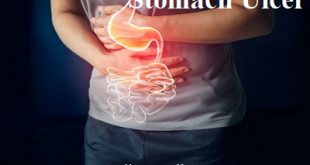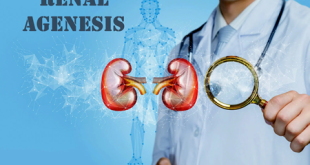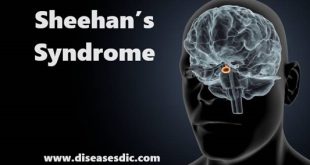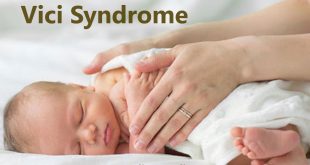Description
Spinal muscular atrophy (SMA) is a group of inherited disorders characterized by a loss of certain nerve cells in the spinal cord called motor neurons or anterior horn cells. Motor neurons receive the nerve impulses transmitted from the brain to the spinal cord (brainstem) and, in turn, transmit the impulses to the muscle via the peripheral nerves. The loss of motor neurons leads to progressive muscle weakness and muscle wasting (atrophy) in muscles closest to the trunk of the body (proximal muscles) such as the shoulders, hips, and back. These muscles are necessary for crawling, walking, sitting up and head control. The more severe types of SMA can affect muscles involved in feeding, swallowing and breathing.
Healthy motor neuron
Pathophysiology of Spinal Muscular Atrophy
SMA is caused by a mutation in the survival motor neuron (SMN) gene. This gene is normally inactive during the fetal period and allows normal apoptosis in the developing fetus. The gene becomes active in the healthy mature fetus to stabilize the neuronal population.
In a healthy person, this gene produces a protein that is critical to the function of the nerves that control our muscles; without it, those nerve cells cannot properly function and eventually die, leading to debilitating and often fatal muscle weakness. In the absence of the gene, programmed cell death persists. The mechanism and timing of abnormal motor neuron death remain unknown.
Types of Spinal Muscular Atrophy
There are different types of SMA. They vary in terms of when they start to appear in an individual, and in the life expectancy that a person with the disorder will have.
SMA type 1
SMA type I is a serious condition. Children with this disorder never manage to sit or stand. It is usually fatal before the age of 2 years. It can be detected before birth, as there may be a reduction in fetal movement during the final months of pregnancy. If not, it will become evident within the first few months of life.
Infants with SMA type 1 never sit or stand, and they do not usually survive to the age of two years. SMA type 1 is also known as Werdnig-Hoffmann disease.
SMA type 2
SMA type II usually appears between the ages of 3 and 15 months. The infant may learn to sit, but will never be able to stand or walk. Life expectancy depends on whether or not the patient develops breathing problems. Most people with SMA type II survive into adulthood.
SMA type 3
SMA type 3, or Kugelberg-Welander disease, appears between 2 and 17 years of age. Symptoms include an unusual gait and difficulty running, climbing steps, or rising from a chair. There may be a slight tremor of the fingers. Some people may lose the ability to walk, and they may also develop scoliosis. Complications include obesity and osteoporosis.
SMA type 4
Symptoms of this rare type of SMA do not usually emerge until the second or third decade of life. Patients with Type 4 SMA can walk during adulthood but will usually experience slowly progressive muscle weakness and other typical SMA symptoms.
Etiology
Genetics
SMA is caused by a mutation in the survival motor neuron genes (SMN) such as SMN1 and SMN2 Gene. Most people have two copies of the SMN1 gene. Individuals who have one faulty copy and one functioning copy are called carriers. Carriers do not have SMA, but they may pass the faulty gene on to their children.
A second gene also has a role in producing SMN protein. This is the survival motor neuron gene 2 (SMN2), often called the SMA “backup gene.” Most of the SMN protein produced by SMN2 lacks a key building block that is normally produced by SMN1. This means that SMN2 cannot fully make up for the mutated SMN1 gene. However, the number of SMN2 genes can vary from person to person, and individuals with more SMN2 copies typically have a less severe form of SMA than those with fewer copies.
If someone in your family has SMA, your chance of being an SMA carrier significantly increases. When both parents are carriers, there is a one in four (25 percent) chance with each pregnancy that they will have a child with SMA.
Risk factors of Spinal Muscular Atrophy
People with two parents who are carriers of the abnormal SMN1 gene are at an increased risk of developing spinal muscular atrophy I, II, III and IV. This is because it is a recessive trait, which requires two copies of the abnormal gene to be present in order for symptoms to appear.
Clinical manifestations
The symptoms of SMA and when they first appear to depend on the type of SMA you have.
Typical symptoms include:
- Floppy or weak arms and legs
- Movement problems – such as difficulty sitting up, crawling or walking
- Twitching or shaking muscles (tremors)
- Bone and joint problems – such as an unusually curved spine (scoliosis)
- Swallowing problems
- Breathing difficulties
SMA doesn’t affect intelligence or cause learning disabilities.
Complications of Spinal Muscular Atrophy
Complications that may result from SMA include:
- Aspiration (food and fluids get into the lungs, causing pneumonia)
- Contractions of muscles and tendons
- Heart failure
- Scoliosis
Scoliosis
Diagnosis and Test
An SMA diagnosis must be confirmed through genetic testing.
SMA is usually diagnosed in one of three ways:
- Through genetic testing, after an infant or child shows symptoms of SMA. This is the most common way to test for SMA. Testing checks for a deletion or variation in the SMN1 gene.
- Through a positive newborn screening result
- Through prenatal testing
Other tests that may be ordered include:
- Aldolase blood test
- Erythrocyte sedimentation rate (ESR)
- Creatine phosphate kinase blood test
- Electromyography (EMG)
- Lactate/pyruvate
- MRI of the spine
- Muscle biopsy
- Nerve conduction
- Amino acid blood tests
- Thyroid-stimulating hormone (TSH) blood test
Treatment and Medication
Children with spinal muscular atrophy (SMA) are treated at our Pediatric Muscular Dystrophy Center. They require ongoing, specialized care from experts, including neurologists, orthopedists, pulmonologists and surgeons. Although there is no cure for the disease, its symptoms and complications can be successfully managed.
Several medications are being studied for this disease. Treatments may include:
Medications
Riluzole blocks certain proteins in the central nervous system that may cause damage to nerve cells. This drug is prescribed for adults with amyotrophic lateral sclerosis (ALS), also called Lou Gerhig’s disease, which is similar to SMA. Preliminary studies have suggested a benefit for some children with SMA, but doctors believe that more studies must be completed before the benefits for children are confirmed.
Hydroxyurea, a chemotherapeutic agent, and valproic acid, also known by the brand name Depakote, are being studied for possible benefits in children with SMA. Due to potentially serious side effects, it is recommended that you discuss these medications with a specialist before you give them to your child.
Nutrition
Children with type I and some with type II SMA have special nutritional needs because of chewing and swallowing problems. Special X-ray studies, called a swallowing study and cine esophagram, may help determine the foods that are dangerous to your child.
Physical Therapy
Muscle weakness in the legs and arms may cause a child to experience tightness in the joints, called contractures. Physical therapists teach your child special range-of-motion exercises to keep muscles flexible and mobile. Night splints on ankles and wrist also may help prevent contractures or joint tightness.
Mobility Aids
Children with type I and type II SMA typically are unable to stand or walk independently and require an electric wheelchair. Many children can safely operate a wheelchair by age 2 or 3.
Respiratory Support
Children with SMA have a high risk of developing respiratory problems. Many respiratory support therapies are recommended to help prevent complications. Treatments may include:
- Breathing exercises.
- Breathing devices when breathing muscles don’t function properly. Devices such as “negative pressure” ventilators and external positive airway pressure support systems can help. Positive airway systems use a gently placed (but snug) mask, to deliver air directly to the nostrils.
- Supplemental oxygen, usually delivered through a small nasal tube
- Yearly immunizations to avoid preventable illnesses, such as influenza
Prevention of Spinal Muscular Atrophy
Spinal muscular atrophy (SMA) is the cause of more deaths in young children than any other genetic disorder. While treatment is available to manage symptoms and prevent complications, there is currently no known method of prevention for SMA.
SMA is inherited as an autosomal recessive disorder, meaning that two copies of a specific abnormal gene must be inherited from parents in order for a child to have SMA. Individuals with only one copy of the abnormal gene are called carriers. Anyone with a closely related family member affected by SMA is at an increased risk of being a carrier and may want to seek the advice of a genetic counselor in order to better understand the risks and chances of having a child affected by SMA.
Preventative measures for respiratory complications, nutritional deficiency, and loss of mobility are central treatment methods for SMA.
 Diseases Treatments Dictionary This is complete solution to read all diseases treatments Which covers Prevention, Causes, Symptoms, Medical Terms, Drugs, Prescription, Natural Remedies with cures and Treatments. Most of the common diseases were listed in names, split with categories.
Diseases Treatments Dictionary This is complete solution to read all diseases treatments Which covers Prevention, Causes, Symptoms, Medical Terms, Drugs, Prescription, Natural Remedies with cures and Treatments. Most of the common diseases were listed in names, split with categories.








physiotherapy treatment for SMA plays a great role for the life expectancy of one
The issue is very immportant. But Saving the article with illustrative pictures more effectual.
I am aged 57 now I had dengue fever 9yrs back. due to frequent 5-6 fall from activa bike not fatal I had spine problem after one and half years of physiotherapy I am able to walk with stick which has four legs in bottom
my knee bends in Little with right side 90% and left 80%
I am taking Freeflex and Altraday. I am fine with all activities with hand no pain anywhere in body legs have come back to normal body shape earlier it became little weak now good.Any other remedy pl suggestThanks
please consult a doctor asap.
I develop pains in my spinal cord when i lye down for some minutes and also during sleep at night, when i deeply inhale i fee the same pain so what can actually cause that.
please consult a spine specialist.
My partner battle with MND ALS (amyotrophic lateral sclerosis) when he was 69 years old 6 years ago. The Rilutek (riluzole) did very little to help him. The medical team did even less. His decline was rapid and devastating. The psychological support from the medical center was non-existent and if it were not for totalcureherbsfoundation com and the sensitive cure of their herbal formula he would have been not been alive today,there was significant improvement in the first 4 weeks of usage that gave us hope that he will be alive,His doctor put him on riluzole, letting us know there was no cure until we gave try on total cure herbal supplement that cure him totally form this disease after 15 weeks of his usage.
There is nothing positive about cure ALS condition except for their herbal treatment .
My first symptoms of ALS occurred in 2009, but was diagnosed in 2011. I had severe symptoms ranging from shortness of breath, balance problems, couldn’t walk without a walker or a power chair, i had difficulty swallowing and fatigue. I was given medications which helped but only for a short burst of time, then i decided to try alternative measures and began on ALS Formula treatment from Herbal Health Point, It has made a tremendous difference for me (Visit ww w. herbalhealthpoint.c om). I had improved walking balance, increased appetite, muscle strength, improved eyesight and others.
My first symptoms of ALS occurred in 2009, but was diagnosed in 2011. I had severe symptoms ranging from shortness of breath, balance problems, couldn’t walk without a walker or a power chair, i had difficulty swallowing and fatigue. I was given medications which helped but only for a short burst of time, then i decided to try alternative measures and began on ALS Formula treatment from Herbal Health Point, It has made a tremendous difference for me (Visit ww w. herbalhealthpoint. c om). I had improved walking balance, increased appetite, muscle strength, improved eyesight and others.